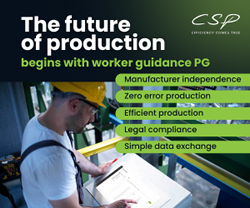ExOne Awarded Contract to Develop and Qualify Novel High-Strength Steel for United States Air Force
ExOne is working with the US Air Force Research Laboratory to develop high-strength AF-9628 steel for use with its binder jet 3D printing.
The ExOne Company (Nasdaq: XONE), the global leader in industrial sand and metal 3D printers using binder jetting technology, today announced that it was recently awarded a contract to develop binder jet manufacturing processes for a novel steel alloy for the United States Air Force Research Laboratory (AFRL).
Awarded by the National Center for Defense Manufacturing and Machining (NCDMM) on Sept. 1, the contract aims to develop and qualify AF-9628, a high-strength steel developed by the Air Force, for binder jet 3D printing.
AF-9628 is currently manufactured with both traditional and additive methods, such as laser powder bed fusion. Parts additively manufactured with AF-9628 are about 20 percent stronger than conventional AM alloys, in terms of ultimate tensile strength, the Air Force reports. However, binder jet 3D printing provides an opportunity to additively manufacture parts with this alloy at a much lower cost.
Binder jet 3D printing transforms powdered materials - metal, sand or ceramic - into dense and functional precision parts at high speeds. An industrial printhead selectively deposits a binder into a bed of powder particles creating a solid part one thin layer at a time. The technology is viewed as a desirable and sustainable production method, largely because of its high speed, relatively low cost and material flexibility. ExOne has qualified more than 20 materials for its patented binder jetting process.
"We are looking forward to our collaboration with ExOne to develop binder jet additive manufacturing processes for AF-9628 alloy and realize a potential manufacturing cost savings for the Air Force," said Jason Thomas, Project Engineer at NCDMM.
Rick Lucas, ExOne CTO and VP, New Markets, added, "We are proud to partner with NCDMM and the Air Force on this exciting project. We look forward to applying our decades of binder jetting experience to this significant 3D printing and defense research."
Case Number: 88ABW-2020-2960
About ExOne
ExOne is the pioneer and global leader in binder jet 3D printing technology. Since 1995, we've been on a mission to deliver powerful 3D printers that solve the toughest problems and enable world-changing innovations. Our 3D printing systems quickly transform powder materials - including metals, ceramics, composites and sand - into precision parts, metalcasting molds and cores, and innovative tooling solutions. Industrial customers use our technology to save time and money, reduce waste, improve their manufacturing flexibility, and deliver designs and products that were once impossible. As home to the world's leading team of binder jetting experts, ExOne also provides specialized 3D printing services, including on-demand production of mission-critical parts, as well as engineering and design consulting. Learn more about ExOne at www.exone.com or on Twitter at @ExOneCo. We invite you to join with us to #MakeMetalGreenâ„¢.
Featured Product

Quality assurance in the manufacturing industry
Efficiency and precision with CSP software. In the highly competitive world of manufacturing, quality assurance is a critical factor for success. CSP offers you state-of-the-art software solutions specifically designed to ensure the highest standards of quality assurance in the manufacturing industry.
